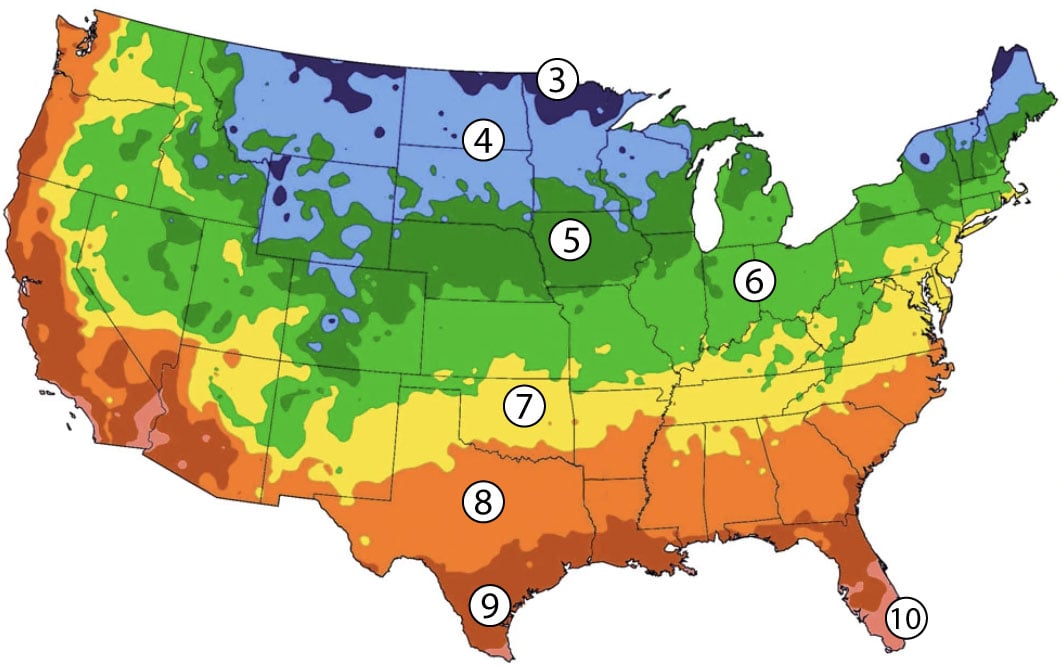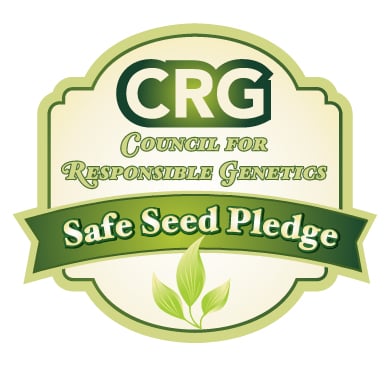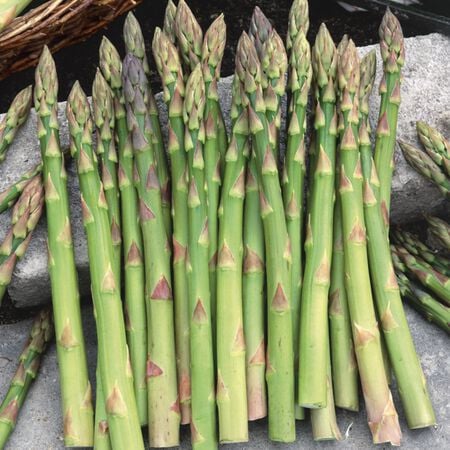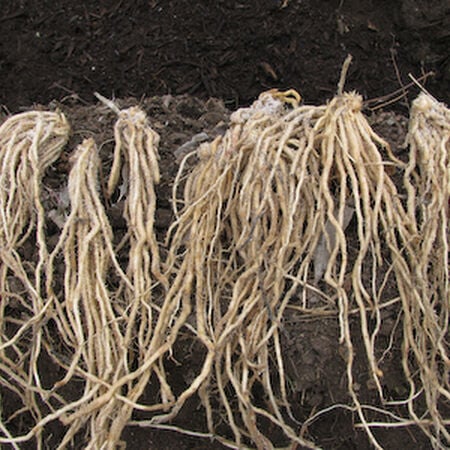Jersey Knight, (F1) Asparagus Roots
Key Attributes
Product Details
Weight
0.5Depth
1Height
9Width
6Plant Height
1-4'Botanical Name
Asparagus officinalisSeed Type
RootsSow Depth
8"Breed
F1 HybridSun
Full SunRoot Age
1 Year CrownLife Cycle
PerennialCategories
AsparagusDays To Maturity (# Days)
365Components
Growing Instructions
![]() Learning Download: How to Grow Asparagus Roots
Learning Download: How to Grow Asparagus Roots
Asparagus is one of the few perennial vegetable crops. The shoots are picked as young spears in the spring. Later in the season the foliage matures into an airy, fern-like cloud which changes to a golden color in the fall. Because asparagus takes up a permanent place in the garden, but can be an attractive plant, many people with space imitations use asparagus as a border or hedge plant.
Before Planting: Plants can be started from seed about 4 weeks before the last expected frost. More commonly they are grown from crowns, which are the one year old base and roots of the plants. These are planted in a trench with the roots spread out over mounded soil. The trench is gradually filled in as the plants grow.
Planting: Dig a trench 8 inches deep and wide enough to accommodate the outspread roots (about 10 inches), then space the asparagus 18 inches apart. Leave four feet between rows. Cover the roots with two inches of soil, and continue to fill in the trench as shoots grow. Be sure never to bury the green shoots completely. The trench can usually be filled by the end of the first growing season, but if not, simply continue to work on it the second year.
Watering: Water regularly, especially while young.
Fertilizer: Top dress annually with compost or mulch. Keep the patch free of competing weeds.
Days to Maturity: It takes about three years for plants to mature enough for harvesting. Prior to that plants should be allowed to grow and feed themselves.
Harvesting: In the third year, begin harvesting spears that are finger-sized and about 8″ long. You can either snap off the spears are cut them with a knife. Harvest for about 4 weeks the first year. In subsequent years you can harvest until the weather warms and the spears look spindly. Then allow the foliage to grow and feed the plants.
Tips: Asparagus is a spring crop, preferring cooler temperatures and full sun.
Shipping Schedule
Asparagus roots will ship at the appropriate time for your planting zone. The chart below estimates when your asparagus roots will arrive. You will receive an email notifying you when your strawberry roots ship giving you a few days to prepare for planting.
This item’s size, weight, or shape may require an additional shipping surcharge based on the shipping location selected. Specific charges will be displayed during checkout. We are unable to take specific shipping dates at this time.
*This product is perishable and does not ship outside the United States.
|
 |
Our Seed Promise
 "Agriculture and seeds" provide the basis upon which our lives depend. We must protect this foundation as a safe and genetically stable source for future generations. For the benefit of all farmers, gardeners and consumers who want an alternative, we pledge that we do not knowingly buy or sell genetically engineered seeds or plants.
"Agriculture and seeds" provide the basis upon which our lives depend. We must protect this foundation as a safe and genetically stable source for future generations. For the benefit of all farmers, gardeners and consumers who want an alternative, we pledge that we do not knowingly buy or sell genetically engineered seeds or plants.
The mechanical transfer of genetic material outside of natural reproductive methods and between genera, families or kingdoms, poses great biological risks as well as economic, political, and cultural threats. We feel that genetically engineered varieties have been insufficiently tested prior to public release. More research and testing is necessary to further assess the potential risks of genetically engineered seeds. Further, we wish to support agricultural progress that leads to healthier soils, to genetically diverse agricultural ecosystems, and ultimately to healthy people and communities.
To learn more about the "Safe Seed Pledge" please visit www.councilforresponsiblegenetics.org.
Key Attributes
Product Details
Weight
0.5Depth
1Height
9Width
6Plant Height
1-4'Botanical Name
Asparagus officinalisSeed Type
RootsSow Depth
8"Breed
F1 HybridSun
Full SunRoot Age
1 Year CrownLife Cycle
PerennialCategories
AsparagusDays To Maturity (# Days)
365Components
Growing Instructions
![]() Learning Download: How to Grow Asparagus Roots
Learning Download: How to Grow Asparagus Roots
Asparagus is one of the few perennial vegetable crops. The shoots are picked as young spears in the spring. Later in the season the foliage matures into an airy, fern-like cloud which changes to a golden color in the fall. Because asparagus takes up a permanent place in the garden, but can be an attractive plant, many people with space imitations use asparagus as a border or hedge plant.
Before Planting: Plants can be started from seed about 4 weeks before the last expected frost. More commonly they are grown from crowns, which are the one year old base and roots of the plants. These are planted in a trench with the roots spread out over mounded soil. The trench is gradually filled in as the plants grow.
Planting: Dig a trench 8 inches deep and wide enough to accommodate the outspread roots (about 10 inches), then space the asparagus 18 inches apart. Leave four feet between rows. Cover the roots with two inches of soil, and continue to fill in the trench as shoots grow. Be sure never to bury the green shoots completely. The trench can usually be filled by the end of the first growing season, but if not, simply continue to work on it the second year.
Watering: Water regularly, especially while young.
Fertilizer: Top dress annually with compost or mulch. Keep the patch free of competing weeds.
Days to Maturity: It takes about three years for plants to mature enough for harvesting. Prior to that plants should be allowed to grow and feed themselves.
Harvesting: In the third year, begin harvesting spears that are finger-sized and about 8″ long. You can either snap off the spears are cut them with a knife. Harvest for about 4 weeks the first year. In subsequent years you can harvest until the weather warms and the spears look spindly. Then allow the foliage to grow and feed the plants.
Tips: Asparagus is a spring crop, preferring cooler temperatures and full sun.
Shipping Schedule
Asparagus roots will ship at the appropriate time for your planting zone. The chart below estimates when your asparagus roots will arrive. You will receive an email notifying you when your strawberry roots ship giving you a few days to prepare for planting.
This item’s size, weight, or shape may require an additional shipping surcharge based on the shipping location selected. Specific charges will be displayed during checkout. We are unable to take specific shipping dates at this time.
*This product is perishable and does not ship outside the United States.
|
 |
Our Seed Promise
 "Agriculture and seeds" provide the basis upon which our lives depend. We must protect this foundation as a safe and genetically stable source for future generations. For the benefit of all farmers, gardeners and consumers who want an alternative, we pledge that we do not knowingly buy or sell genetically engineered seeds or plants.
"Agriculture and seeds" provide the basis upon which our lives depend. We must protect this foundation as a safe and genetically stable source for future generations. For the benefit of all farmers, gardeners and consumers who want an alternative, we pledge that we do not knowingly buy or sell genetically engineered seeds or plants.
The mechanical transfer of genetic material outside of natural reproductive methods and between genera, families or kingdoms, poses great biological risks as well as economic, political, and cultural threats. We feel that genetically engineered varieties have been insufficiently tested prior to public release. More research and testing is necessary to further assess the potential risks of genetically engineered seeds. Further, we wish to support agricultural progress that leads to healthier soils, to genetically diverse agricultural ecosystems, and ultimately to healthy people and communities.
To learn more about the "Safe Seed Pledge" please visit www.councilforresponsiblegenetics.org.




